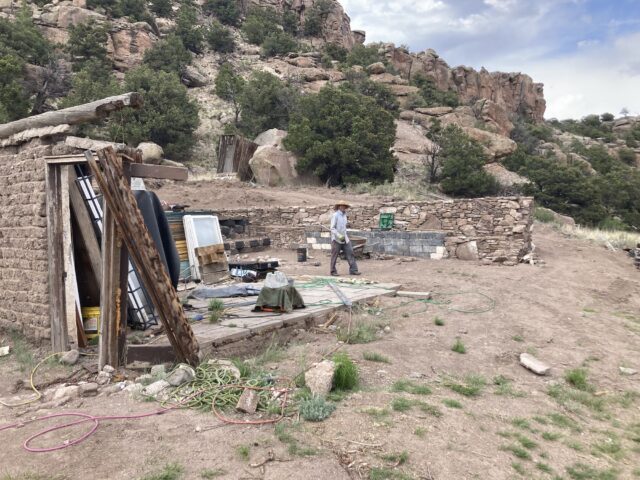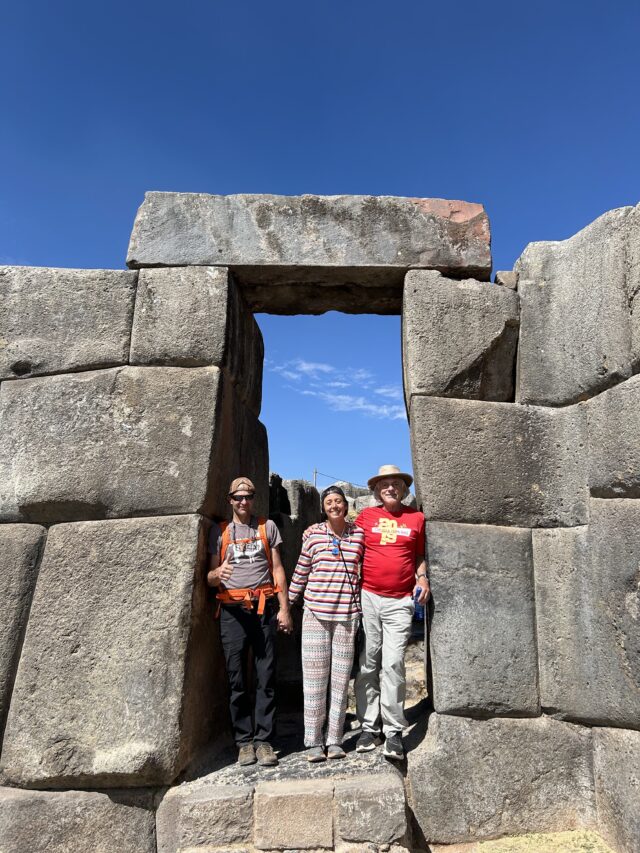Lucky me, to have a 2008, a 2011, and now a 2024 visit to the Sacred Valley, each time with at least one of my daughters, whose company is wonderful and whose Spanish gets me out of jams.
This trip, Laura rejoined me, bringing along with her partner, Marc, for the first time. It seemed fitting to suggest a trip to see the Inca and pre-Inca ruins since Marc and Laura are building a house of stone themselves.

Some day I’ll negotiate the rights to publish a detailed post on their off-the-grid land which Marc has rightly named Helm’s Deep.
Cusco and Sacsayhuamán
We landed in Cusco at 11,000 feet, regrettable taking a taxi that took us to a relative’s hotel that had no vacancy, dropping us off on the least desirable avenue in Cusco, from where we walked uphill to nicer parts to find lodging.
Much of what we did in Cusco involved the ruins, walking twice to Sacsayhuamán.
If I ever understand how it was possible for some unknown peoples to erect such massive stone walls without mortar and with unique stones fitting millimeters apart, standing firmly for hundreds or thousands of years, I’ll add a post about it. For now, I’ll just touch on the business while mentioning some interesting and sometimes funny events of the Peru trip.

In 1553, Pedro Cieza de León was equally stupefied by the gigantic stonework of Sacsayhuamán (just walking distance from Cusco). He wrote,
And in these walls there were stones so large and mighty that it tired the judgment to conceive how they could have been conveyed and placed, and who could have had sufficient power to shape them, seeing that among these people there are so few tools. Some of these stones are of a width of twelve feet and more than twenty long, others are thicker than a bullock.
….
The Spaniards have so pillaged and ruined it, that I should be sorry to have been guilty of the fault of those in power who have permitted so magnificent a work to be so ruined. They have not considered the time to come, for it would have been better to have preserved the edifice and to have put a guard over it.”
According to “Sacsayhuamán”, archeologists have attempted to replicate the moving and placement of the stones with limited success, including a runaway 2,000 pound stone they were trying to lower down a mountain. None of the archeological explanations in that particular article even attempted—let alone succeeded—to explain how the stones could have been quarried and shaped perfectly on every side.
____Footnotes____
[1]The spellings of Sacsayhuamán illustrate well the collision between ethnological respect and orthography. The Wikipedia article currently begins, “Sacsayhuamán, Sacsayhuaman, Sacsahuaman, Saxahuaman, Saksaywaman, Saqsaywaman, Sasawaman, Saksawaman, Sacsahuayman, Sasaywaman or Saksaq Waman (possibly from Quechua language, waman falcon or variable hawk) is a citadel on the northern outskirts of the city of Cusco, Peru, the historic capital of the Inca Empire.”
Here’s a nine-minute slideshow of our recent trip to Peru that I put together for those who were in the left-behind (outside of Peru) series:
